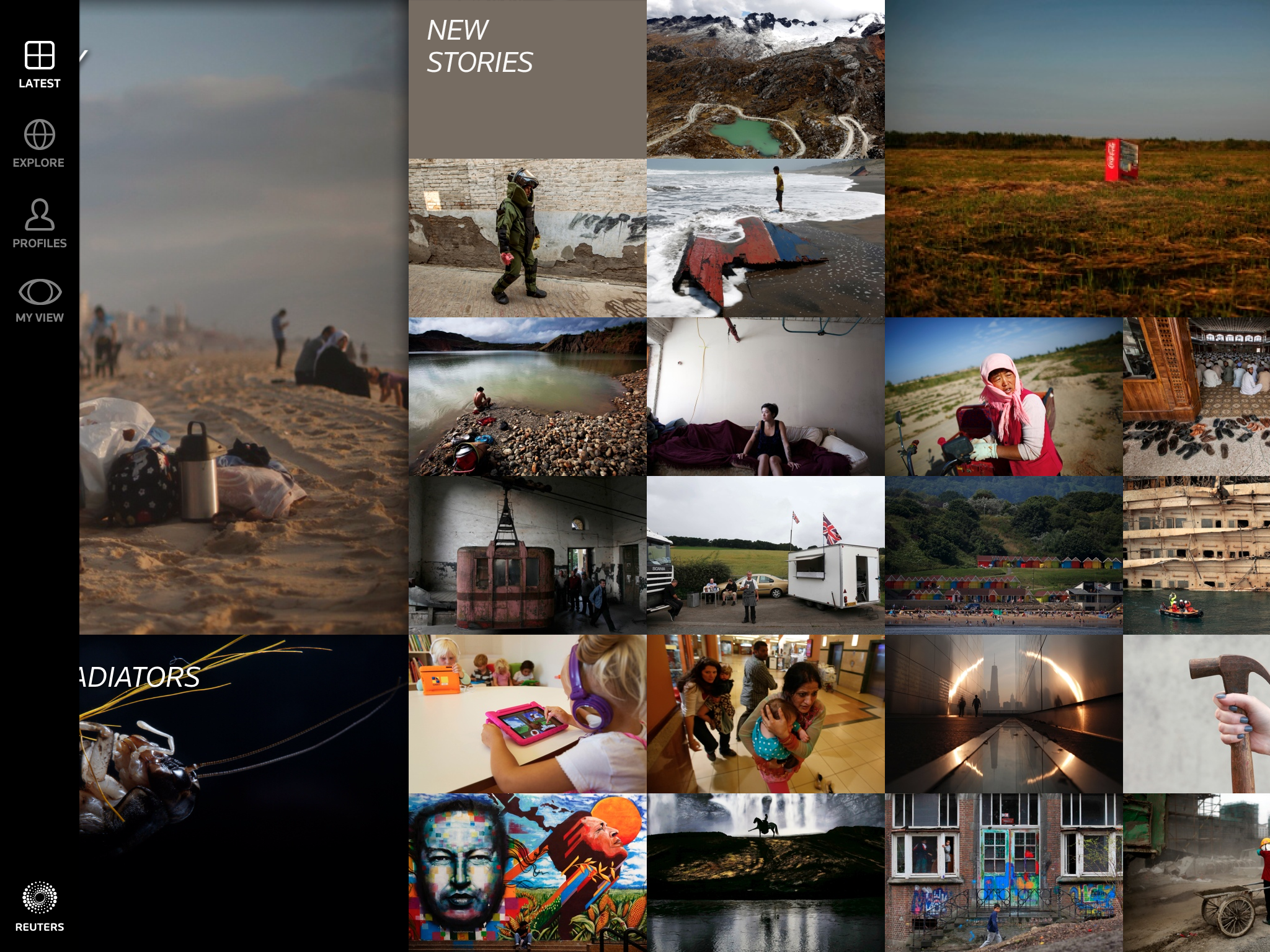We’ve enlisted the help of the Book Reaper to get our books back for the end of year stocktake. A little bit of horror goes a long way.
Monthly Archives: October 2013
Are we teaching our students the skills they need for their future?
Are we teaching our students the skills they need for their future?
Do we know what these are and if we do, are we aligning these to our curriculum? Are we making the shift necessary for this to happen?
Dr. Tony Wagner, co-director of Harvard’s Change Leadership Group has identified what he calls a “global achievement gap,” which is the leap between what even our best schools are teaching, and the must-have skills of the future: * Critical thinking and problem-solving * Collaboration across networks and leading by influence * Agility and adaptability * Initiative and entrepreneurialism * Effective oral and written communication * Accessing and analyzing information * Curiosity and imagination
[youtube=http://www.youtube.com/watch?v=NS2PqTTxFFc&w=420&h=315]
Here are the 10 future work skills identified by The Institute for the Future for the University of Phoenix Research Institute.
- Sense Making
- Novel and Adaptive Thinking
- Transdisciplinary
- Social Intelligence
- New Media Literacy
- Computational Thinking
- Cognitive Load Management
- Design Management
- Cross Cultural Competence
- Virtual Collaboration
For teacher librarians, these skills clearly identify our areas of expertise at a time when some principals are making decisions to reduce staffing in school libraries, or replace teacher librarians with librarians or technicians, indicating their loss of faith that teacher librarians are an essential part of the teaching staff. Our strength lies in working with teachers to embed these skills in student learning, to encourage collaborative platforms and relational learning through the connections made possible by social media platforms, to embed critical, digital and information literacies into student learning.
Read more about the skills our students must have for their future here and here. Please share more if you have them.
How do you view the library? (It’s a matter of perception) – presentation to Curriculum Committee
This week I did a 10 minute presentation to the Curriculum Committee. Our involvement with the faculties varies so it’s always a good idea to remind faculty heads about how teacher librarians can support them and work with them. I’ve summarised the gist of the message with each slide.
[googleapps domain=”docs” dir=”presentation/d/1vBfoFox8bz0aT85NOsy3sR5m03jMyI1bUBKHEMy8VIw/embed” query=”start=false&loop=false&delayms=3000″ width=”960″ height=”569″ /]
Slide 1: How do you view the library; it’s a matter of perception
Think about what the library means to you as faculty head.
Slide 2: The library is more than just books
We are physical, virtual, events, ubiquitous information, skills training
Slide 3: We do not live in Library Land
We are not a free-floating entity
We are part of mechanism that drives the teaching and learning in the school, and if not, we are of no real significance.
Slide 4: We are part of the whole production
We work with you to develop programs and projects, we resource and teach collaboratively.
Whatever works for you, we are flexible.
Slide 5: Ch-ch-ch-ch-ch-changes
This has been a year of change.
There have been so many changes for us.
Slide 6: New culture: the quiet library
Changed culture in the library – respect for quiet study, time out.
First time this year, we hope that there will be an ongoing acceptance of the way things are.
It’s been good, we’ve been surprised to see how many students prefer to come to a disciplined space and study, even with the choice not to come.
Slide 7: We look forward to next year
New entrance and open space for chilling and reading.
New discussion rooms including development of collection for teachers’ reading, both recreational and professional.
More flexibility – 3 or even 4 discussion rooms
We would like to see classes come in and use the physical collection
and so that we can be involved in their research/writing processes.
We need to think about organising our spaces to cater for the whole school and not just VCE.
Slide 8: Changes to the way we work
Changes in TL roles: taking responsibility for certain faculties
Getting to know you and your subject area and needs in a deeper way
Continuing our collaboration with you – talking about what you need, coming to your faculty meetings, supporting you with resources, teaching the skills your students need – critical evaluation of resources including the glut of information available to them, becoming lifelong learners, skills they will take with them into university and beyond.
Slide 9: What we’ve been doing
We’ve been working with faculties to support teachers and students
If you haven’t seen us, please come and see us about what we can do for you and with you.
Slide 10: If we don’t have what you need, we can create it
Have you seen the revised library website homepage – easier navigation
We can tailor-make guides – for example Art project and English Language or Vis Com.
Slide 11:
We help you embed skills, for example, this is what they might incorporate:
Digital Citizenship
eg copyright and plagiarism, web evaluation, citation and referencing,
research skills (tab from Library Home)
Slide 12: Our Facebook page
Like it!
Slide 13: Our blog
Follow it!
Slide 14: Pinterest – Playing with new ways of curating online resources
Boards can be
subject related, for a specific project (eg This sporting life), subject-related extras to dip into (eg History – images, videos), technical tutorials (eg Google),
Pinterest links of interest:
Supporting and creating curriculum –
Text based resources eg Death of a Salesman
Thematic studies: Banned books
English – Issues
Art – Pattern: Islamic
Digital Citizenship – Digital literacies
Slide 15 – Make time to talk to us
Please make a time with us to talk about how we can support you in your teaching or support your students
to create digital resources on the platform of your choice.
The photojournalism of The Wider Image app – we don’t need to grow up without pictures
I’m sure that I’m never going to grow out of my love of images – I still love pictures as much as I did as a young girl. Language too, hence the linguistic focus in both my undergraduate and Masters degrees. And I couldn’t choose between the power of words and the immediacy of images. So Readers like Feedly and Pulse, bookmarking sites such as Pinterest, all make me very happy in the way they combine text and image. I appreciate information much more when it’s enhanced by imagery.
Today I came across The Wider Image app –
The Wider Image app for iPad was conceived to reimagine the way news photography can engage through evolving platforms, to position imagery at the heart of multimedia and to realise the unique potential of photojournalism.
‘Reimagine’ is a great word, isn’t it? Reimagining news is adding a human, aesthetic perspective on news. When I was a teenager, a good friend gave me a copy of an annual digest of Life Magazine and encouraged me to cut it up and stick it all over my bedroom walls. It seemed like dessication but I did it. Those photos were powerful. I discovered photojournalism. You read the news article once but you can’t stop looking at the photos.
We should definitely be introducing our students to diverse ways of viewing information. Students uninterested in news, in factual reporting, in long articles, are much more likely to be hooked by a powerful image. An image leads to endless possibilities for discussion and writing.
The Wider Image app transforms news and news stories by using Reuters’ photographs, and creates an interactive experience for the reader. Although you can see these new pictures on Reuters’ blog, Reuters Pictures, I would recommend that you get the free app if you have an iPad.
An interesting part of The Wider Image app’s interactivity is the map linking stories with location.
Further data is provided about the country of location.
I admit, I do go on about pictures. So many posts about imagery. And I still feel strongly that the education of our students is missing the richness of visual literacies. Ever doubted that images are just as important as text? Let me leave you with pictures from Shaun Tan’s The Arrival.







